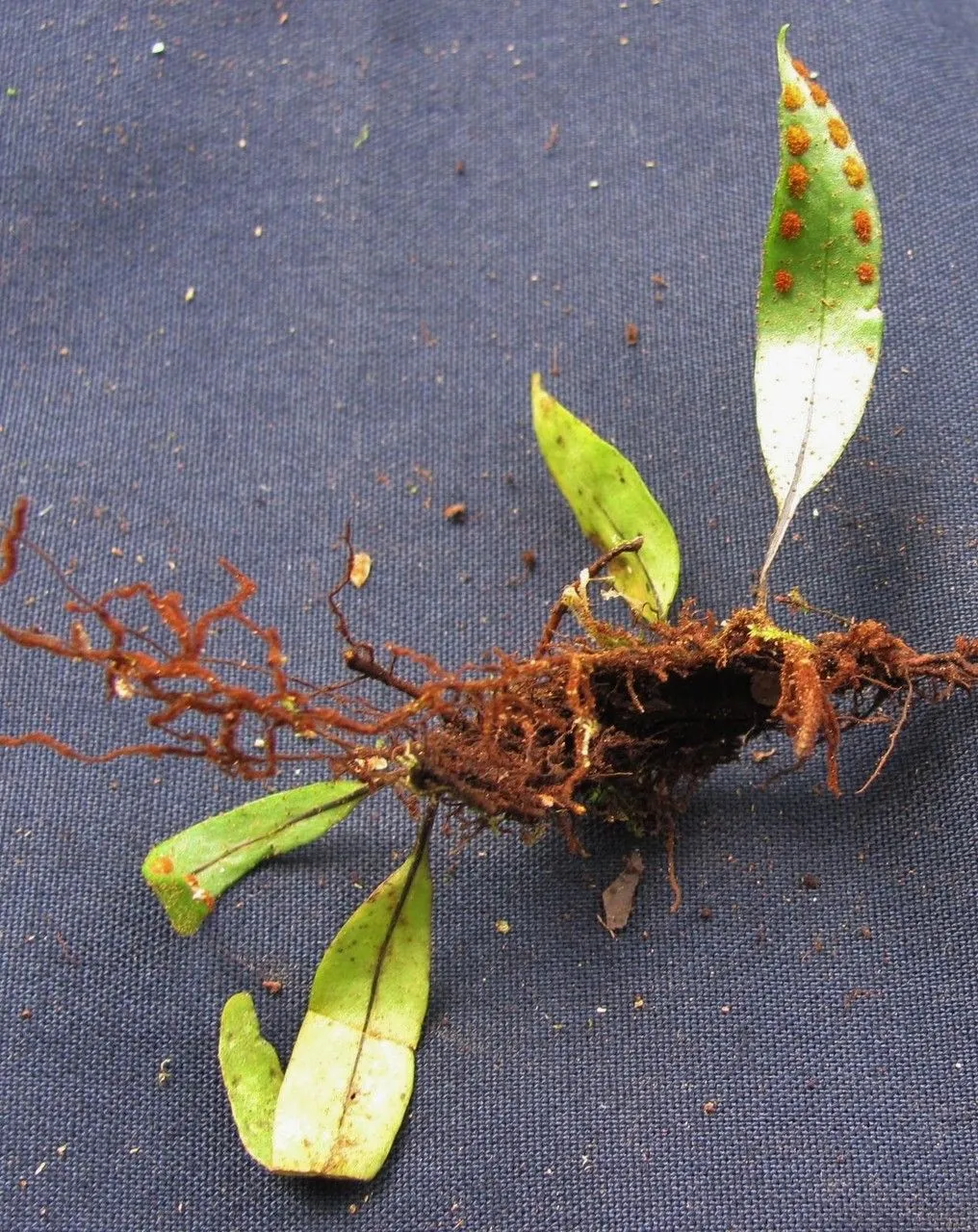
Author: (Liebm.) E.Fourn.
Bibliography: Mexic. Pl.: 87 (1872)
Year: 1872
Status: accepted
Rank: species
Genus: Pleopeltis
Vegetable: False
Observations: Trop. & Subtrop. America
The Starscale fern, scientifically known as Pleopeltis astrolepis, is a fascinating member of the Polypodiaceae family. This species was first meticulously documented in “Mexic. Pl.: 87” in the year 1872, with its authoritative classification attributed to (Liebm.) E.Fourn.
This resilient fern predominantly thrives in the tropical and subtropical regions of the Americas, showcasing its adaptability to a variety of climates within these zones. Its presence across these diverse habitats highlights not only its ecological versatility but also its importance in the regional biodiversity.
The Starscale fern is named for its distinctive star-like scales that cover its fronds, a feature that sets it apart from many other ferns and adds to its ornamental appeal. This unique characteristic not only contributes to its common name but also plays a vital role in its adaptation and survival, offering protection and aiding in moisture retention in its native environments.
As a member of the Polypodiaceae family, Pleopeltis astrolepis shares numerous traits with its relatives, yet its distinct appearance and specific growing conditions mark it as a unique and noteworthy species within the fern community. Whether encountered in the wild or cultivated in botanical collections, the Starscale fern remains an intriguing subject of study and admiration for botanists and plant enthusiasts alike.
Eng: starscale fern
En: Starscale fern
© copyright of the Board of Trustees of the Royal Botanic Gardens, Kew.
© copyright of the Board of Trustees of the Royal Botanic Gardens, Kew.
© copyright of the Board of Trustees of the Royal Botanic Gardens, Kew.
Taken Nov 2, 2015 by OTS – Chaves-Fallas, José Miguel (cc-by-nc-sa)
Taken Nov 2, 2015 by OTS – Chaves-Fallas, José Miguel (cc-by-nc-sa)
Taken Nov 2, 2015 by OTS – Chaves-Fallas, José Miguel (cc-by-nc-sa)
Growth habit>: Forb/herb
Family: Myrtaceae Author: (F.Muell.) K.D.Hill & L.A.S.Johnson Bibliography: Telopea 6: 402 (1995) Year: 1995 Status:…
Family: Rubiaceae Author: Pierre ex A.Froehner Bibliography: Notizbl. Bot. Gart. Berlin-Dahlem 1: 237 (1897) Year:…
Family: Sapindaceae Author: Koidz. Bibliography: J. Coll. Sci. Imp. Univ. Tokyo 32(1): 38 (1911) Year:…
Family: Asteraceae Author: A.Gray Bibliography: Pacif. Railr. Rep.: 107 (1857) Year: 1857 Status: accepted Rank:…
Family: Fabaceae Author: Medik. Bibliography: Vorles. Churpfälz. Phys.-Ökon. Ges. 2: 398 (1787) Year: 1787 Status:…
Family: Aspleniaceae Author: (Cav.) Alston Bibliography: Bull. Misc. Inform. Kew 1932: 309 (1932) Year: 1932…